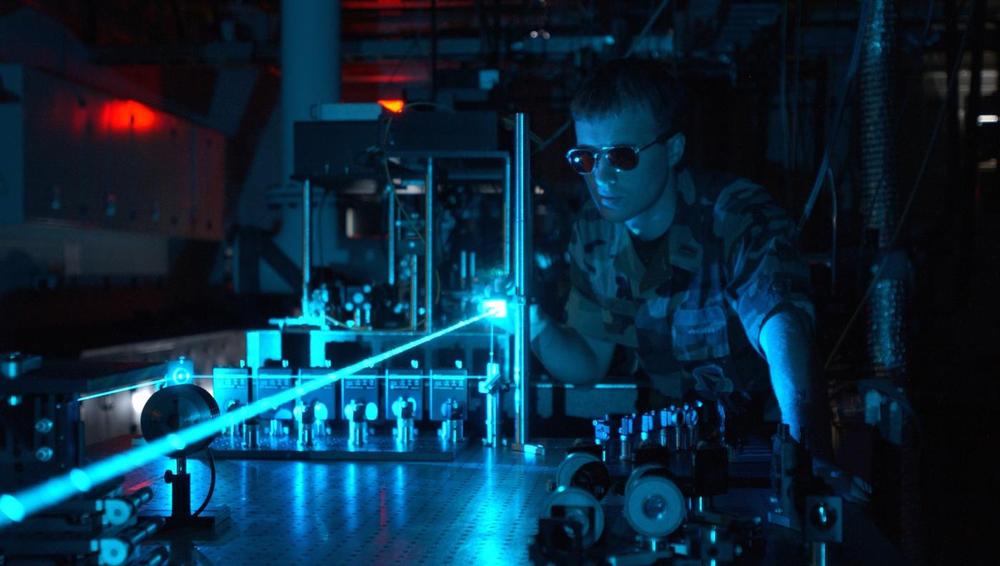Page 9142
Feb 6, 2019
This 2,000 trillion watt laser could re-create the Big Bang–and make clean energy
Posted by Quinn Sena in categories: cosmology, solar power, sustainability
The most powerful laser beam ever created has been recently fired at Osaka University in Japan, where the Laser for Fast Ignition Experiments (LFEX) has been boosted to produce a beam with a peak power of 2,000 trillion watts—two petawatts—for an incredibly short duration, approximately a trillionth of a second or one picosecond.
Values this large are difficult to grasp, but we can think of it as a billion times more powerful than a typical stadium floodlight or as the overall power of all of the sun’s solar energy that falls on London. Imagine focusing all that solar power onto a surface as wide as a human hair for the duration of a trillionth of a second: that’s essentially the LFEX laser.
LFEX is only one of a series of ultra-high power lasers that are being built across the world, ranging from the gigantic 192-beam National Ignition Facility in California, to the CoReLS laser in South Korea, and the Vulcan laser at the Rutherford Appleton Laboratory outside Oxford, UK, to mention but a few.
Feb 6, 2019
Space-based laser weapons could ultimately take out missile threats in boost phase
Posted by Quinn Sena in categories: military, space
Pentagon officials are trying to anticipate where boost-phase missile defense technology development is headed. (imaginima/Getty Images)
Feb 6, 2019
US needs megawatt class combat lasers to counter hypersonic missiles
Posted by Quinn Sena in categories: engineering, space
Michael Griffin, the undersecretary for research and engineering, expects future budgets to provide funds for lasers that the missile defense agency can more rapidly develop and field. Space-control needs to have megawatt-class lasers.
Hypersonic weapons’ low signature in flight and high degree of maneuverability upon final approach to targets make the weapons difficult to defend against.
The last time the US really invested in transformative capabilities that overwhelmed adversaries [in Desert Storm] was the Reagan era.
Continue reading “US needs megawatt class combat lasers to counter hypersonic missiles” »
Feb 6, 2019
A meteorite exploded over Cuba and its boom was captured on video
Posted by Genevieve Klien in categories: mobile phones, space

Space rocks come crashing down to Earth with somewhat startling regularity, and when they do they often create a big boom. When a meteorite detonates in Earth’s atmosphere it produces an explosion which researchers call bolides, or simply “fireballs.”
Most of the time, a fireball appears and disappears before anyone is quick enough to grab their smartphone and record it, so we’re left with dash cam videos and still images from stationary cameras to give us a glimpse of the event. Last week, a fireball came crashing down in Cuba and, in a rare treat, we actually get to hear it.
Feb 6, 2019
Morals versus money: How we make social decisions
Posted by Xavier Rosseel in categories: economics, ethics, finance, neuroscience
The researchers found that people have a moral preference for supporting good causes and not wanting to support harmful or bad causes. However, depending on the strength of the monetary incentive, people will at one point switch to selfish behavior. When the authors reduced the excitability of the rTPJ using electromagnetic stimulation, the participants’ moral behavior remained more stable.
“If we don’t let the brain deliberate on conflicting moral and monetary values, people are more likely to stick to their moral convictions and aren’t swayed, even by high financial incentives,” explains Christian Ruff. According to the neuroeconomist, this is a remarkable finding, since: “In principle, it’s also conceivable that people are intuitively guided by financial interests and only take the altruistic path as a result of their deliberations.”
Our actions are guided by moral values. However, monetary incentives can get in the way of our good intentions. Neuroeconomists at the University of Zurich have now investigated in which area of the brain conflicts between moral and material motives are resolved. Their findings reveal that our actions are more social when these deliberations are inhibited.
Continue reading “Morals versus money: How we make social decisions” »
Feb 6, 2019
Cleaning up the clutter: How proto-biology arose from the prebiotic clutter
Posted by Xavier Rosseel in categories: biotech/medical, chemistry
‘’We find selection rules driving interactions in chemistry as a result of environmental conditions; or emergent properties such as catalytic activity, self-assembly and self-replication; or even as a result of the specifics of chemical reactions.’’
Just like the mythical creation stories that depict the formation of the world as the story of order from chaos, the early Earth was home to a chaotic clutter of organic molecules from which, somehow, more complex biological structures such as RNA and DNA emerged.
There was no guiding hand to dictate how the molecules within that prebiotic clutter should interact to form life. Yet, had those molecules just interacted randomly then, in all likelihood, that they would never have chanced upon the right interactions to ultimately lead to life.
Continue reading “Cleaning up the clutter: How proto-biology arose from the prebiotic clutter” »
Feb 6, 2019
This Birdlike Robot Uses Thrusters to Float on Two Legs
Posted by Genevieve Klien in categories: robotics/AI, space travel
Leonardo the lanky robot can sort of hover-walk on two legs—and that could land it on Mars one day.
Feb 6, 2019
AlphaPilot AI Drone Innovation Challenge
Posted by Klaus Baldauf in categories: drones, robotics/AI

Register now! We’re calling on the world’s greatest minds to achieve a new milestone for the future of artificial intelligence and autonomous flight.
















